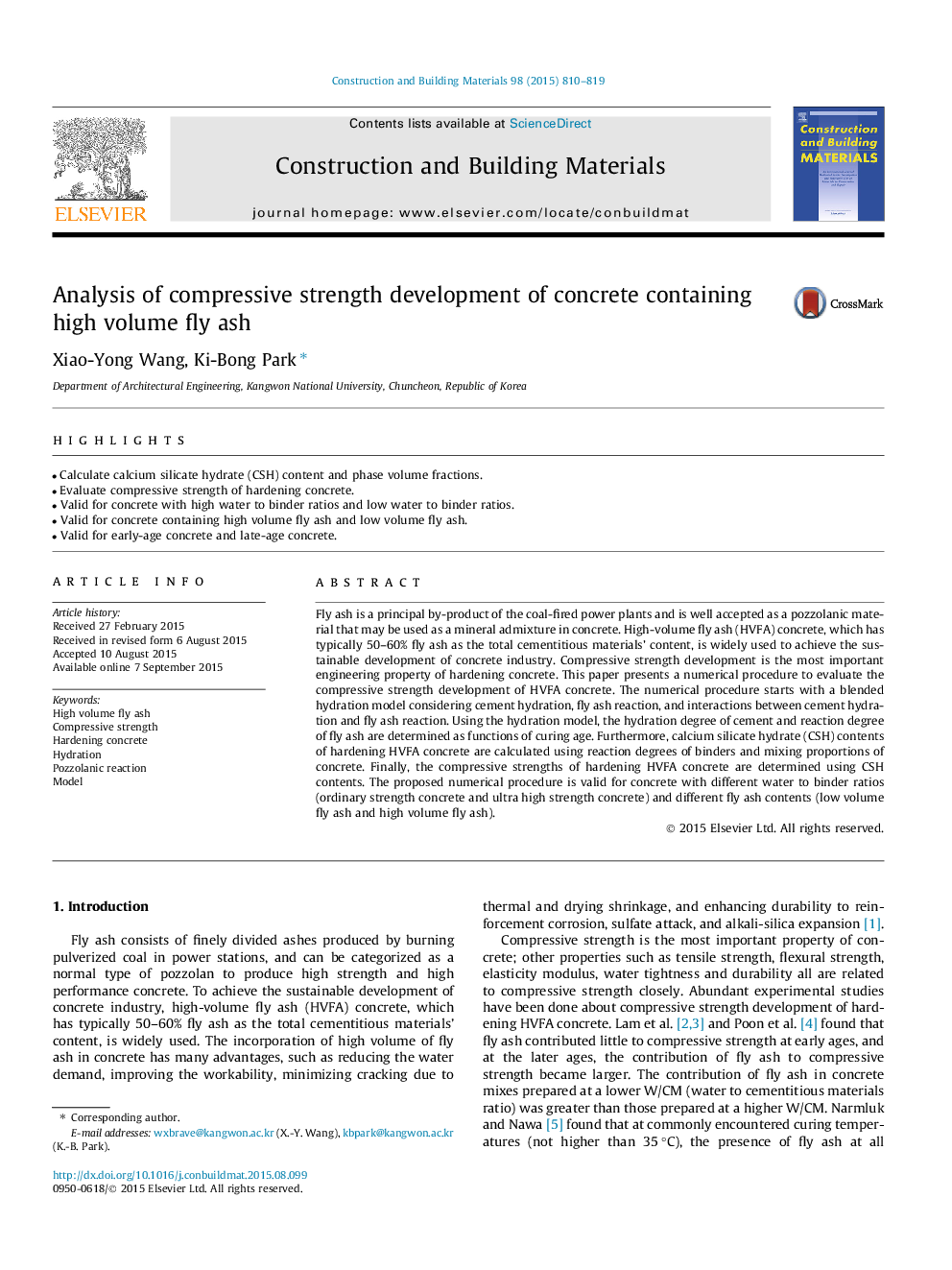| Article ID | Journal | Published Year | Pages | File Type |
|---|---|---|---|---|
| 256653 | Construction and Building Materials | 2015 | 10 Pages |
•Calculate calcium silicate hydrate (CSH) content and phase volume fractions.•Evaluate compressive strength of hardening concrete.•Valid for concrete with high water to binder ratios and low water to binder ratios.•Valid for concrete containing high volume fly ash and low volume fly ash.•Valid for early-age concrete and late-age concrete.
Fly ash is a principal by-product of the coal-fired power plants and is well accepted as a pozzolanic material that may be used as a mineral admixture in concrete. High-volume fly ash (HVFA) concrete, which has typically 50–60% fly ash as the total cementitious materials’ content, is widely used to achieve the sustainable development of concrete industry. Compressive strength development is the most important engineering property of hardening concrete. This paper presents a numerical procedure to evaluate the compressive strength development of HVFA concrete. The numerical procedure starts with a blended hydration model considering cement hydration, fly ash reaction, and interactions between cement hydration and fly ash reaction. Using the hydration model, the hydration degree of cement and reaction degree of fly ash are determined as functions of curing age. Furthermore, calcium silicate hydrate (CSH) contents of hardening HVFA concrete are calculated using reaction degrees of binders and mixing proportions of concrete. Finally, the compressive strengths of hardening HVFA concrete are determined using CSH contents. The proposed numerical procedure is valid for concrete with different water to binder ratios (ordinary strength concrete and ultra high strength concrete) and different fly ash contents (low volume fly ash and high volume fly ash).
